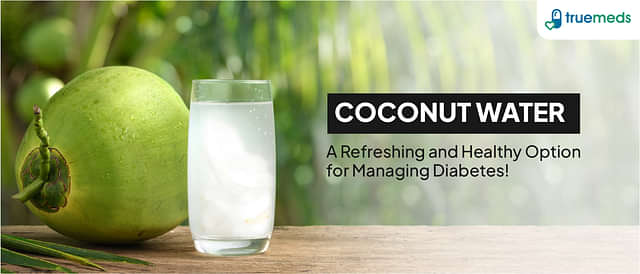Lactose Intolerance: Overview, Causes And Symptoms
Last updated on : 13 May, 2025
Read time : 7 min
What is Lactose and what enzyme breaks down lactose?
Lactose is milk sugar. Lactase, an enzyme in our bodies, breaks down the lactose sugar so that it may be absorbed by our systems. Lactose malabsorption syndrome is a problem for those who are lactose intolerant. The small intestine is where it’s made.
Some people are able to digest milk products even if they have low lactase levels. Lactose intolerance symptoms are observed in people when they eat dairy because their lactase levels are low.
What is Lactose intolerance?
It is a condition in which the body is unable to digest lactose, a sugar found predominantly in milk and dairy foods. Lactase deficiency is caused by a lack of the enzyme lactase, which is produced by the small intestine and is required for lactose sugar digestion. While intolerance of lactose is not life-threatening, the lactose malabsorption symptoms might be unpleasant.
Lactose intolerance symptoms including bloating, gas, and diarrhoea might be caused by the bacteria in your large intestine interacting with the lactose. Lactase deficiency may also be referred to as this condition.
Intolerance of lactose is caused by a lack of the enzyme lactase, which is produced in the small intestine. Lactase levels might be low and lactose-free milk products can still be digested. However, if your levels are too low, you will develop intolerance of lactose, which will cause discomfort when you eat or drink dairy.
Most persons with intolerance of lactose can manage their lactose intolerance symptoms without completely eliminating dairy foods from their diet.
Also Read-Hives Causes, Prevention and Natural Remedies
Lactose intolerance causes
Lactose intolerance causes when the small intestine is unable to properly digest milk sugar due to a lack of lactase production (lactose).
Milk sugar is normally converted by lactase into glucose and galactose, two simple sugars that are taken into the bloodstream via the intestinal wall.
Lactose sugar in your meals is not digested and absorbed if you have lactase deficiency. Intolerance of lactose is caused by normal bacteria in the intestines interacting with undigested lactose.
Types:
- Primary lactose intolerance: The quantity of lactase produced by children decreases when they substitute lactose free milk with other meals, but it usually remains high enough to digest the amount of dairy in a typical adult diet. In primary lactose malabsorption syndrome, the synthesis of lactase decreases rapidly with age, making it difficult to digest milk products.
- Secondary lactose intolerance: This develops as a result of an injury, illness, or surgery. Any of these things can cause your small intestine to produce less lactase. Low lactase is associated with Celiac disease and Crohn’s disease, two of the most common digestive illnesses.
- Developmental lactose intolerance: Prematurely born newborns can have developmental lactose malabsorption syndrome. It normally goes away on its own after a short period of time following birth.
- Congenital lactose intolerance: It is an uncommon condition in which the small intestine does not produce lactase (or only a little quantity of it) from birth. It’s a hereditary condition, and both parents must carry the gene to their child.
Lactose intolerance symptoms
Some of the signs of lactose intolerance include gas, bloating and diarrhoea within 30 minutes to two hours after drinking milk or dairy foods. Lactose intolerance causes symptoms because the body does not create enough lactase to break down lactose. The severity of the lactose intolerance symptoms varies from person to person, depending on how much lactose sugar they can take. Lactose-containing foods can cause discomfort in some people even when consumed in large quantities, however, lactose sensitivity varies widely across individuals.
Diagnosis of lactose intolerance
By doing one or more of the following tests, your doctor will be able to confirm the diagnosis.
- Lactose tolerance test: you will consume a large amount of lactose-containing liquid. Your blood sugar levels will be tested about two hours after you eat the meal. Lactose sugar in the beverage will not be digested if your glucose level does not rise.
- Hydrogen breath test: You’ll have to drink a lactose-heavy liquid to take the hydrogen breath test. At regular intervals, your breath will be tested for hydrogen levels. When lactose isn’t digested, it breaks down in the colon, generating hydrogen that can be detected in the breath of those who aren’t.
- Stool acidity test: Testing for lactic acid, which is formed by the breakdown of undigested milk sugars in the colon, is an option for infants and children who cannot be tested otherwise.
Treatment of lactose intolerance
Treatment aims to alleviate lactose intolerance symptoms by altering one’s diet.
Intolerance of lactose sufferers can usually find a lactose-containing meal level that does not cause lactose malabsorption symptoms. A Lactose-Free Diet allows you to temporarily exclude all lactose-containing foods from your regular diet before gradually reintroducing them one at a time until you find the amount and type of lactose-containing products that you can tolerate.
If you want to experiment with lactose-free dairy foods, consume a smaller portion of your typical dairy items, or eat them with meals because lactose sugar may be better absorbed when eaten with other foods. Lactose-free dairy foods, such as cheese, yoghurt, and cottage cheese, may also improve your lactose tolerance.
How can I tell if a food is lactose-free?
When shopping for food, pay attention to the ingredients listed on the label. Lactose-containing dairy foods include:
- Whey
- Cheese
- Milk by-products
- Dry milk solids
- Lactose
- Butter
- Curds
- Nonfat dry milk
- Dry milk powder
Milk powder that has been dehydrated.
Foods marked “may contain milk” should be avoided as well. The intensity of your lactose intolerance symptoms may necessitate limiting or avoiding some meals.
Lactose-free substances include the following ingredients derived from milk:
- Casein
- Lactalbumin
- Lactate
- Lactic acid
Prescription drugs, such as birth control pills (oral contraceptives), contain up to 20% lactose, as well as 6% of over-the-counter prescriptions, such as certain tablets for stomach acid and gas.
In most cases, only patients with severe Intolerance of lactose are affected by these drugs. Check the labels on over-the-counter drugs to see if they contain lactose sugar by asking your pharmacist or doctor.
Small amounts of lactose can be found in the following foods:
- Baked products, such as bread.
- Some milk chocolate and candies
- Cereals and cereal bars for breakfast.
- Instant soups, rice, and noodle mixes
- Meats for lunch (other than kosher).
- Crackers and other foods flavoured with cheese.
- Pancake, biscuit, and cookie batter mixes are all available in a variety of forms.
- Margarine and butter.
- Meat is derived from various organs (such as the liver).
- Sugar beets, peas, and lima beans are some of the more common vegetable options.
How to reintroduce lactose following a lactose-free diet?
- To test your lactose tolerance, gradually increase the amount of lactose-containing foods and beverages you consume. Depending on your tolerance, you may be able to drink up to half a cup of lactose-free milk with each meal.
- Drink no more than one cup of milk at a time.
- Try cheeses like cheddar that are low in lactose.
- Drink lactose-free milk as part of a meal or as a beverage in conjunction with other foods.
- To get the most out of your yoghurt, look for plain yoghurt or Greek yoghurt that has live cultures in it. Yoghurt may be easier for you to digest than milk. Depending on the brand, your tolerance may be different. Yoghurt may be more tolerated, however, frozen yoghurt may not be.
- Lactose-reduced and lactose-free dairy foods can be used in place of ordinary dairy products. Most supermarkets have a dairy area where these products can be found.
- In addition to powder, liquid, pill, and chewable forms, the lactase enzyme is also available as a supplement. It doesn’t require a prescription, and it can help you eat lactose-containing meals. Take the enzyme along with the lactose-containing food to help digest it. Lactase is a digestive enzyme that aids in the breakdown of lactose sugar for absorption by the body.
Disclaimer
Our healthcare experts have carefully reviewed and compiled the information presented here to ensure accuracy and trustworthiness. It is important to note that this information serves as a general overview of the topic and is for informational purposes only. It is not intended to diagnose, prevent, or cure any health problem. This page does not establish a doctor-patient relationship, nor does it replace the advice or consultation of a registered medical practitioner. We recommend seeking guidance from your registered medical practitioner for any questions or concerns regarding your medical condition.
Popular Articles
Recent Articles
Top-Selling Medicines:
...View more
Top-Selling OTC:
...View more
Company
About UsHealth ArticleHealth StoriesDiseases & Health ConditionsAyurvedaAll MedicinesAll BrandsNeed HelpFAQSubscribe
Registered Office Address
Grievance Officer
Download Truemeds

Contact Us
Our customer representative team is available 7 days a week from 9 am - 9 pm.
v3.8.7
2025 - Truemeds | All rights reserved. Our content is for informational purposes only. See additional information.
Our Payment Partners









































